Abstract
Blood nicotine, cotinine, and carboxyhaemoglobin (COHb) concentrations were measured in 392 smokers (255 women and 137 men) of "middle tar" (17-22 mg), "low to middle" (11-16 mg), and "low tar" (less than 11 mg) cigarettes. Since tar intake cannot yet be measured directly, we devised an index to estimate it based on the use of measured levels of an intake marker (eg, blood nicotine) and the ratio of the tar to marker yields of the cigarettes. This approach was validated by its ability to enhance the prediction of levels of one marker by use of another. In a practical test, using COHb and the CO/nicotine yield ratio of the cigarettes, the mean blood nicotine concentration of the low tar smokers was predicted to be 31.9 ng/ml compared with the measured mean of 31.8 ng/ml. Our main findings were that despite substantial compensatory increases in inhalation, the low tar smokers took in about 25% less tar, about 15% less nicotine, and about 10% less carbon monoxide than smokers of middle and low to middle tar cigarettes. These results indicate that low tar cigarettes of the type available in Britain since the late 1970s are likely to prove less harmful than other brands. Monitoring of smoke intakes could supplement epidemiological approaches and provide earlier evidence of whether changing cigarette designs lead to any significant dosage reduction that could affect the risk of disease.
Full text
PDF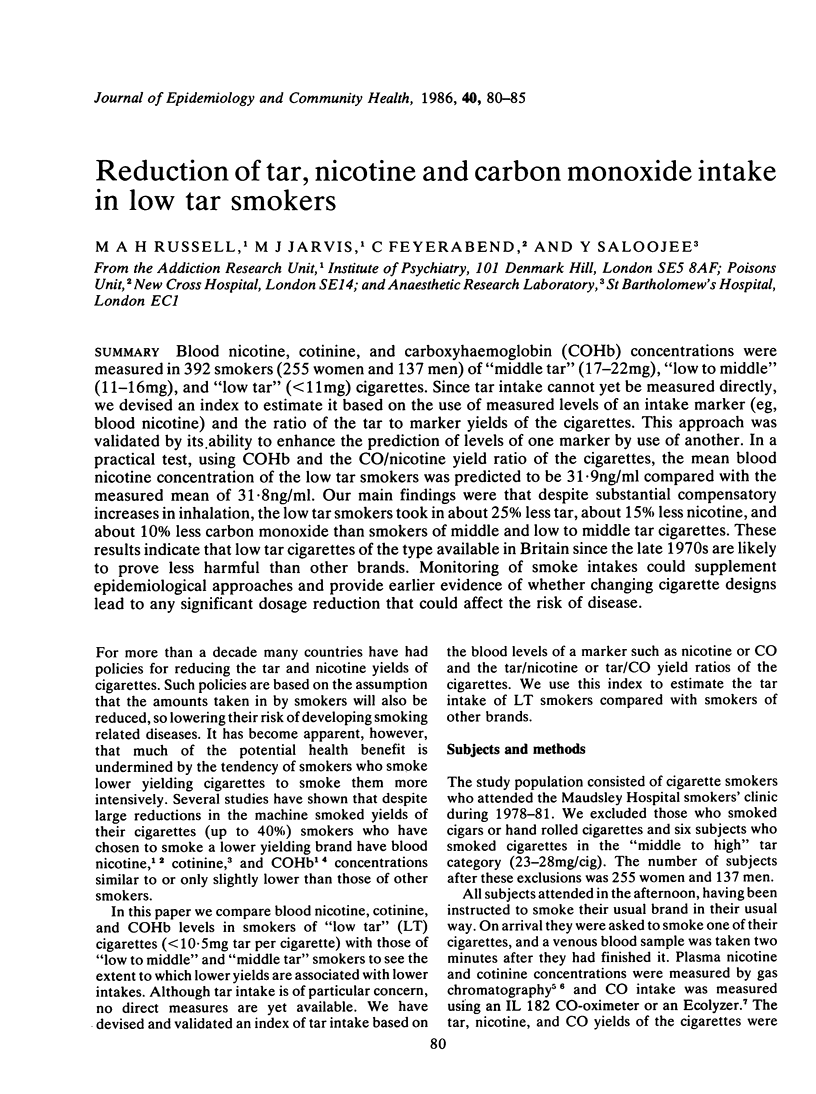

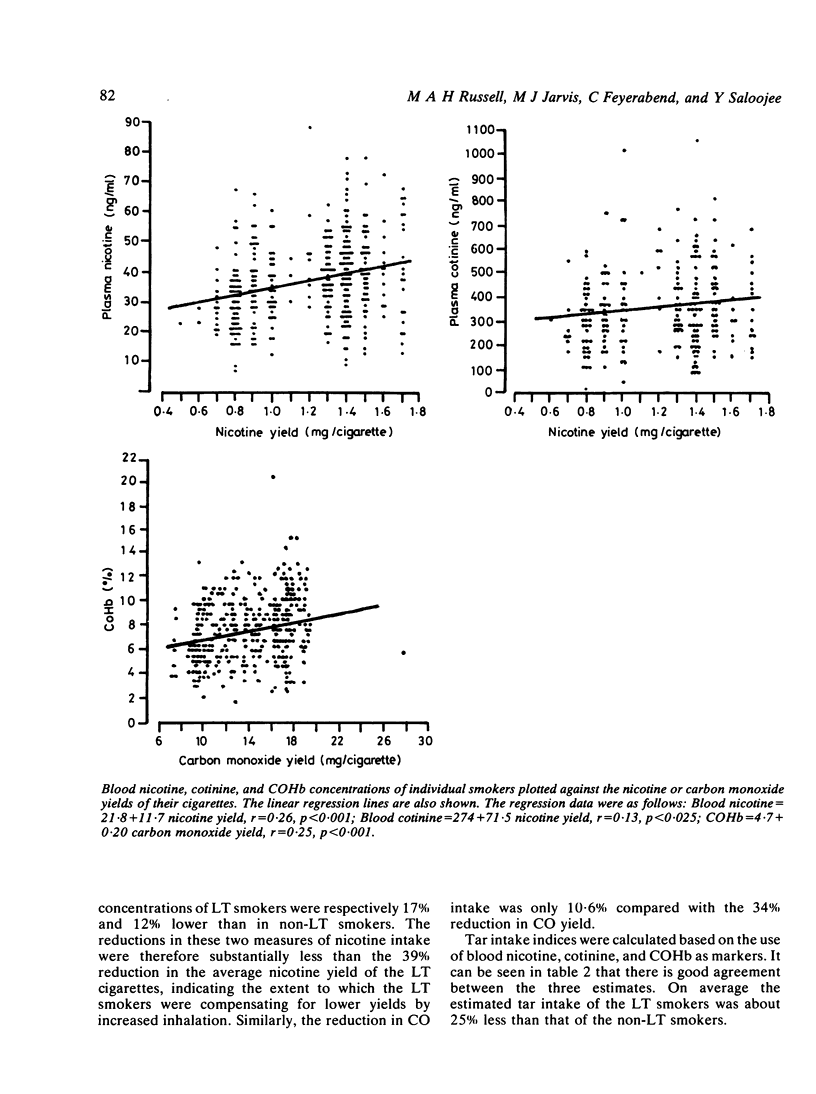
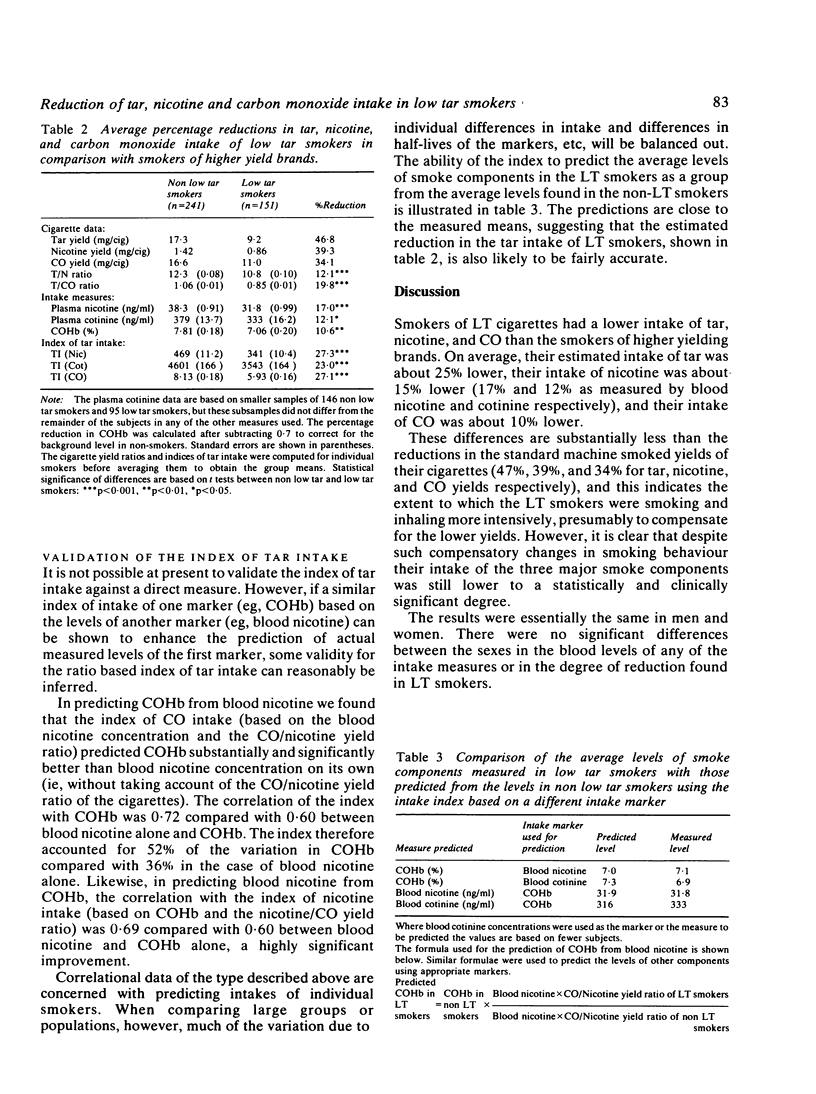
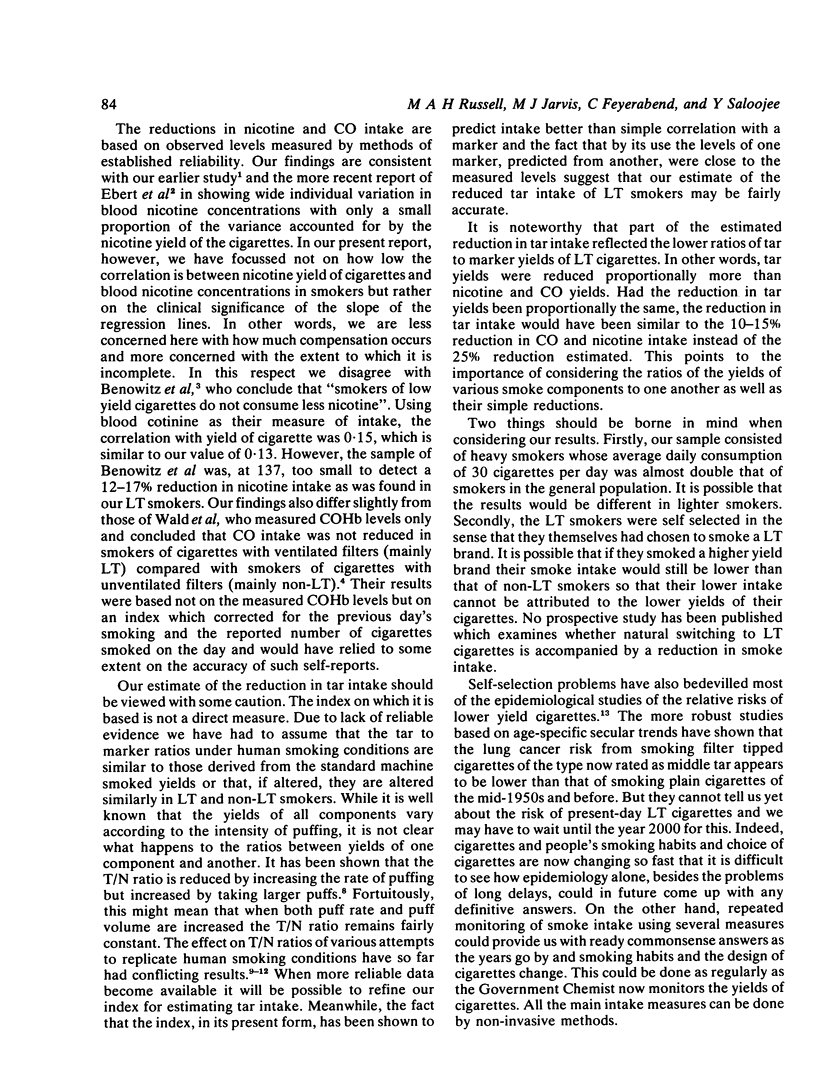
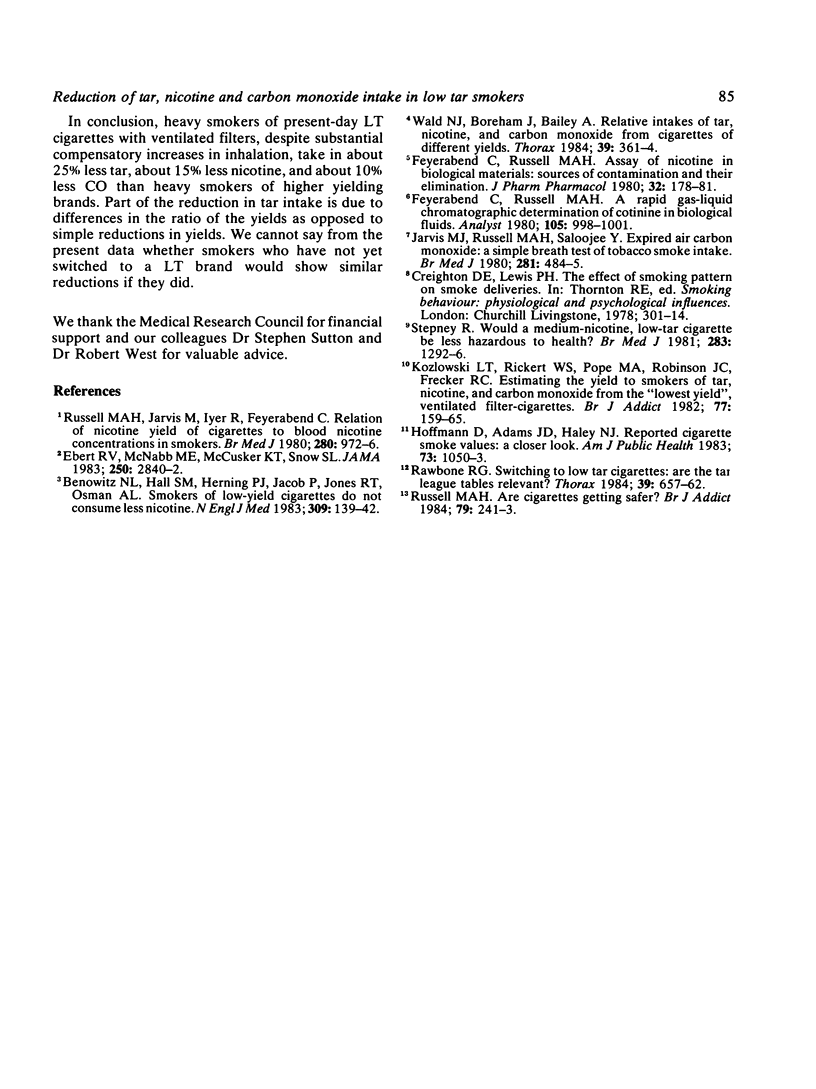
Selected References
These references are in PubMed. This may not be the complete list of references from this article.
- Benowitz N. L., Hall S. M., Herning R. I., Jacob P., 3rd, Jones R. T., Osman A. L. Smokers of low-yield cigarettes do not consume less nicotine. N Engl J Med. 1983 Jul 21;309(3):139–142. doi: 10.1056/NEJM198307213090303. [DOI] [PubMed] [Google Scholar]
- Ebert R. V., McNabb M. E., McCusker K. T., Snow S. L. Amount of nicotine and carbon monoxide inhaled by smokers of low-tar, low-nicotine cigarettes. JAMA. 1983 Nov 25;250(20):2840–2842. [PubMed] [Google Scholar]
- Feyerabend C., Russell M. A. Assay of nicotine in biological materials: sources of contamination and their elimination. J Pharm Pharmacol. 1980 Mar;32(3):178–181. doi: 10.1111/j.2042-7158.1980.tb12885.x. [DOI] [PubMed] [Google Scholar]
- Feyerabend C., Russell M. A. Rapid gas-liquid chromatographic determination of cotinine in biological fluids. Analyst. 1980 Oct;105(1255):998–1001. doi: 10.1039/an9800500998. [DOI] [PubMed] [Google Scholar]
- Hoffmann D., Adams J. D., Haley N. J. Reported cigarette smoke values: a closer look. Am J Public Health. 1983 Sep;73(9):1050–1053. doi: 10.2105/ajph.73.9.1050. [DOI] [PMC free article] [PubMed] [Google Scholar]
- Jarvis M. J., Russell M. A., Saloojee Y. Expired air carbon monoxide: a simple breath test of tobacco smoke intake. Br Med J. 1980 Aug 16;281(6238):484–485. doi: 10.1136/bmj.281.6238.484. [DOI] [PMC free article] [PubMed] [Google Scholar]
- Kozlowski L. T., Rickert W. S., Pope M. A., Robinson J. C., Frecker R. C. Estimating the yield to smokers of tar, nicotine, and carbon monoxide from the 'lowest yield' ventilated filter-cigarettes. Br J Addict. 1982 Jun;77(2):159–165. doi: 10.1111/j.1360-0443.1982.tb01417.x. [DOI] [PubMed] [Google Scholar]
- Rawbone R. G. Switching to low tar cigarettes: are the tar league tables relevant? Thorax. 1984 Sep;39(9):657–662. doi: 10.1136/thx.39.9.657. [DOI] [PMC free article] [PubMed] [Google Scholar]
- Russell M. A. Are cigarettes getting safer? Br J Addict. 1984 Sep;79(3):241–243. doi: 10.1111/j.1360-0443.1984.tb00271.x. [DOI] [PubMed] [Google Scholar]
- Russell M. A., Jarvis M., Iyer R., Feyerabend C. Relation of nicotine yield of cigarettes to blood nicotine concentrations in smokers. Br Med J. 1980 Apr 5;280(6219):972–976. doi: 10.1136/bmj.280.6219.972. [DOI] [PMC free article] [PubMed] [Google Scholar]
- Stepney R. Would a medium-nicotine, low-tar cigarette be less hazardous to health? Br Med J (Clin Res Ed) 1981 Nov 14;283(6302):1292–1296. doi: 10.1136/bmj.283.6302.1292. [DOI] [PMC free article] [PubMed] [Google Scholar]
- Wald N. J., Boreham J., Bailey A. Relative intakes of tar, nicotine, and carbon monoxide from cigarettes of different yields. Thorax. 1984 May;39(5):361–364. doi: 10.1136/thx.39.5.361. [DOI] [PMC free article] [PubMed] [Google Scholar]


